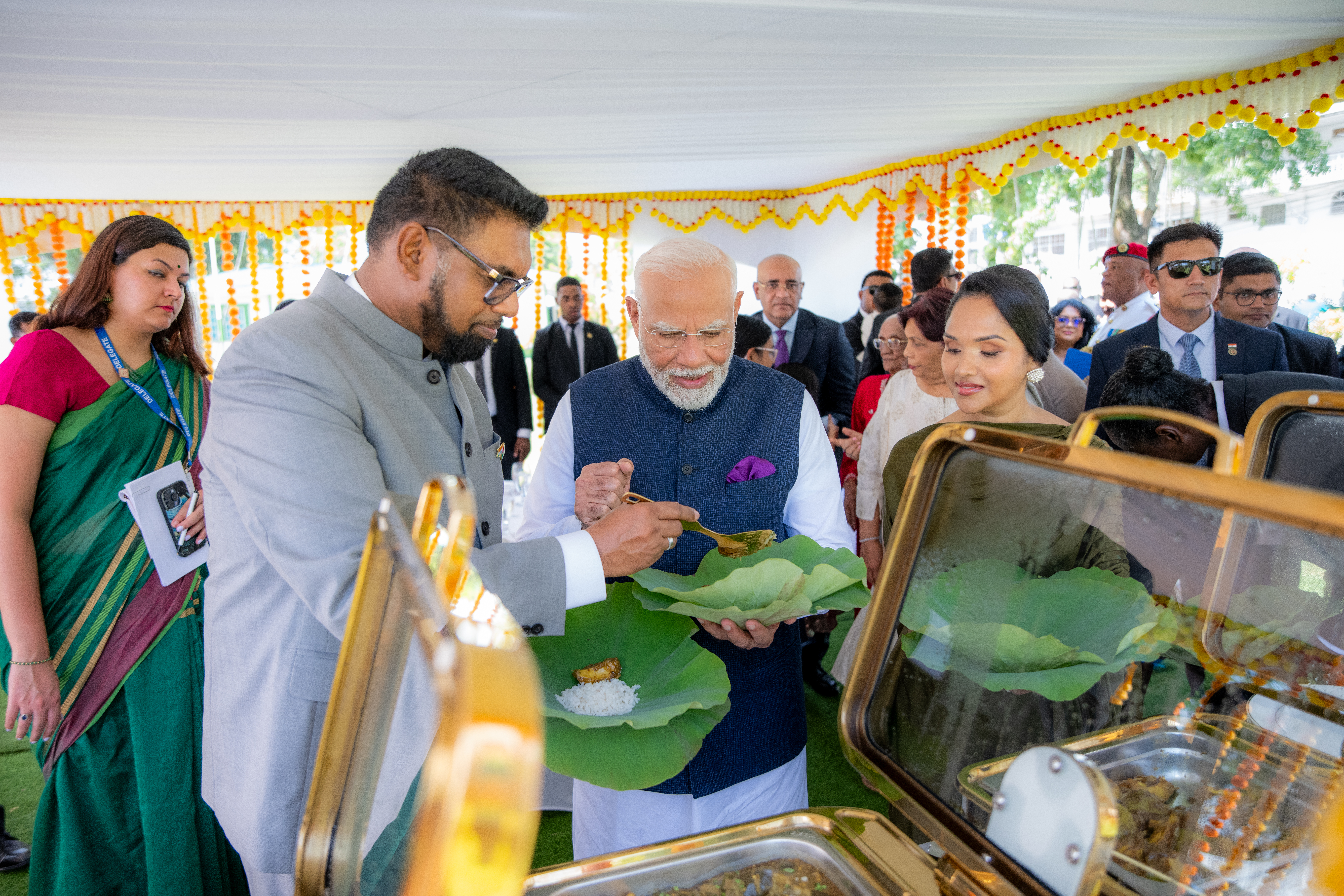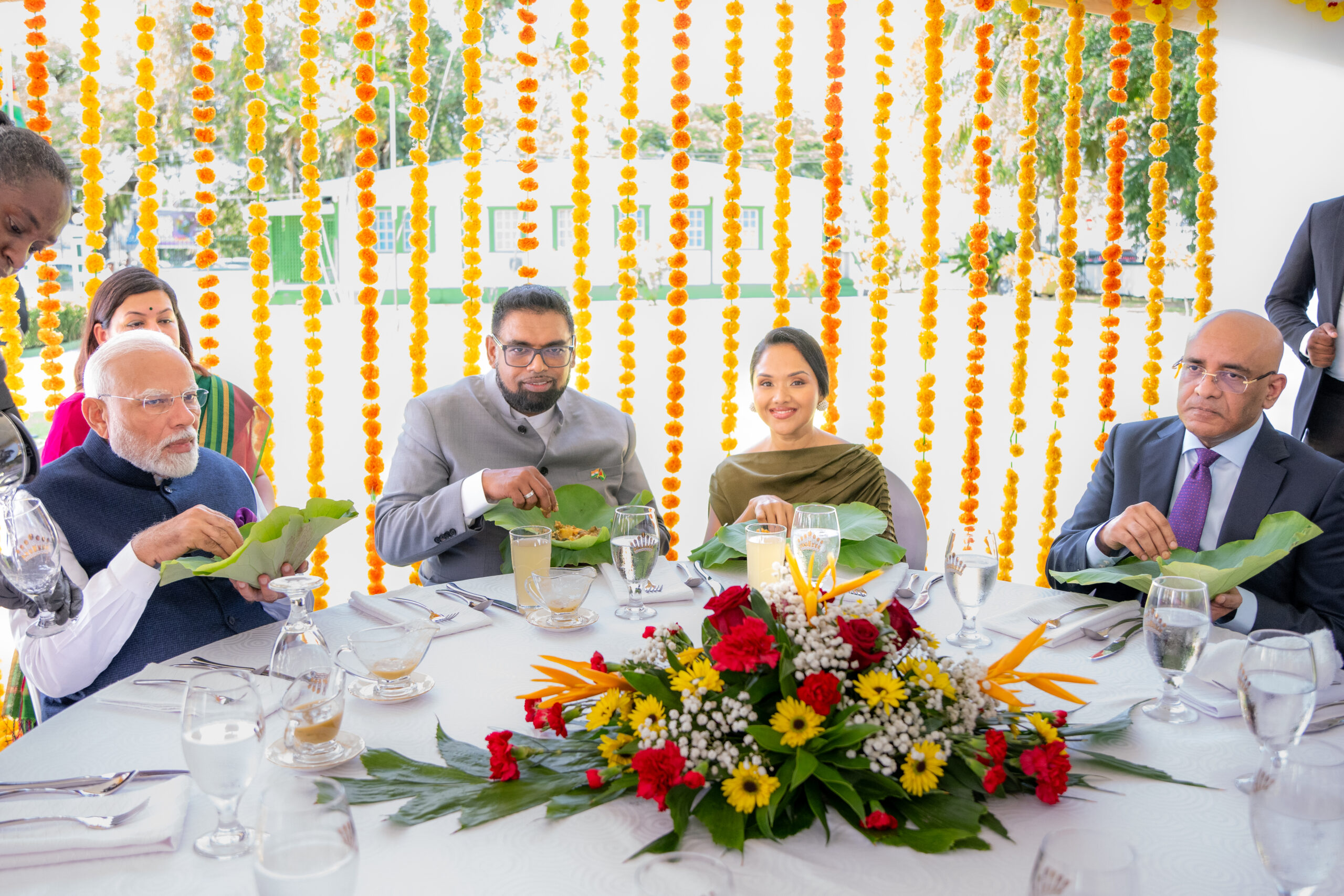By Neil Marks
neil@newsroom.gy
“You can eat with a fork if you want.”
Yes, a fork. For seven curry. Lawlessness, right?
Needless to say, I found the suggestion by President Irfaan Ali to Indian Prime Minister Narendra Modi rather out of place.
Realising it wasn’t 5:30 in the morning and I would be spared a good halla, I was about to point out the absurdity, but Modi interjected, even if he entertained the thought for a second.
“I’ll do what you’re doing,” Modi responded.
Ah, yes, wisdom prevailed.
It’s lunch Wednesday, November 20, 2024 at State House, the official residence of the First Family.
Modi and Ali had just had solid discussions over things like defence cooperation (not sure yet if we are getting more military equipment from India) and energy (India has been trying to buy all of Guyana’s share of oil from the Stabroek Block); so, time to settle down to more fun things.

And what more fun than a healthy foray into the country’s rich culinary traditions that offer a blend of Guyanese flair with Indian roots.
The two washed hands over a red bakey (a big tub, for those of you who need the translation) and proceeded to the beautifully decorated tent on the lawns of State House.
Before them was a spread of seven curries – the seven traditionally served at Indian religious functions, including the obligatory katahar, because otherwise it ain’t a prappa seven curry.
They collected their leaves and the President insisted on dishing out Modi’s portion.
I have it on good record that Modi was served dhaal and rice with katahar, bajee, baigan and eddoe, mango curry, aloo and channa, pumpkin, some coconut choka, and a paneer concoction.
To wash it down, some good swank. To be clear, Kool- Aid is the sacred tradition but can’t go wrong with swank.
Anyhow, let’s talk about this seven curry business.
I have spoken to people over and over again about where the tradition of seven curry and eating with our fingers come from, but there is dissent and disagreement – but an overall ownership of the custom as genuinely Guyanese.
So is it that the Indians who started coming here in 1838 resort to the purine leaf because they did the same thing in their homeland? Or is it that they simply didn’t have plates?
Is eating with your hands also because they didn’t have things to eat with? Or does it have something to do with the belief that eating with your hands allows you to immerse all your senses with the food, sort of a mindful, spiritual act?

In Ayurveda, the ancient Indian system of medicine, the five fingers represent the five elements: earth, water, fire, air, and space. Bringing these elements together while eating is thought to create balance and harmony, aiding digestion and promoting well-being.
But we don’t think about it that much in Guyana, do we? This is just a tradition that has been passed down from generations and even though we use cutlery today, eating with your fingers remains a joyful practice.
And besides, to sanay is much easier with your fingers, and well, to chatay your fingers after is one of the most fulfilling experiences in eating – for me at least. A spiritual experience then?
That still leaves the question of the purine leave. Why do we use that and not banana leaves like those in India do? There is also no certainty to that. Maybe it just holds dhaal better?
Aside from serious discussions, having seven curry in a purine leaf and eating with their hands was indeed a light-hearted nod and a deeply symbolic gesture to the intertwined histories of India and Guyana.
How far will this seven curry diplomacy help in cementing what the two sides were hoping to get out of this visit by Modi – the first by an Indian Prime Minister since 1968 – remains to be seen.
I can tell you this much – I did have some of the seven, but it ain’t lash like when it is cooked on an outdoor fireside.
The post Seven curry diplomacy? appeared first on News Room Guyana.